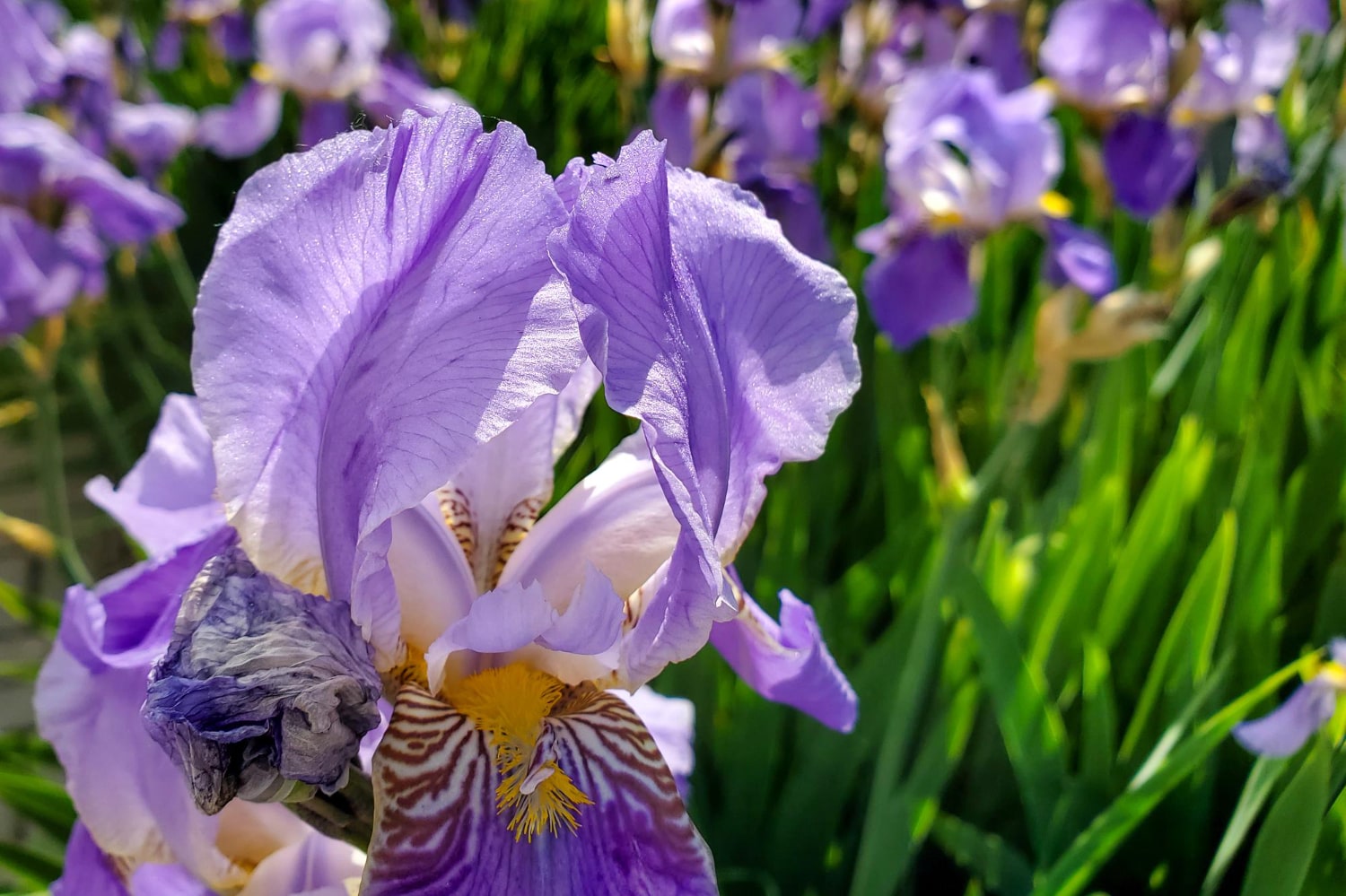Irises are flowers admired for their elegance, variety of colors, and rich symbolism. They have been known since ancient times and were used not only to decorate gardens but also in medicine and art. The iris is considered a flower that combines beauty with practical value, as its rhizomes are used in perfumery and medicinal preparations. This plant has many varieties and grows in different regions of the world. Below you will find interesting facts about irises that you might not know.
- The name iris comes from the Greek goddess of the rainbow, Iris. This is linked to the flower’s wide range of colors, making it a symbol of nature’s palette. In different cultures it represents faith, hope, and renewal. This association helped the iris gain popularity in art.
- There are more than 300 species of irises that grow in diverse climates. They can be found in Europe, Asia, Africa, and North America. Some species prefer dry steppes, while others thrive near bodies of water. This adaptability makes irises one of the most versatile ornamental plants.
- Irises come in a wide spectrum of colors. They can be blue, purple, white, yellow, or even nearly black. Some varieties display several shades on a single petal, creating a shimmering effect. This quality makes them highly valued in garden design.
- The iris flower has a distinctive structure. Three outer petals bend downward, while three inner ones rise upward. This shape resembles a crown. For this reason, the iris is seen as a symbol of power and dignity, and in heraldry it became the basis for the famous fleur-de-lis.
- In France the iris is a national symbol. It appeared on the coats of arms of the Capetian dynasty. It represented strength, nobility, and the link between power and divinity. The image of the iris can still be found on historical monuments.
- Irises are widely used in medicine. The rhizomes of certain species contain essential oils with expectorant, anti-inflammatory, and antiseptic properties. In folk medicine they were used to treat coughs and stomach disorders. In modern pharmacy they remain a valuable raw material.
- Perfumery also values irises highly. After special processing, their rhizomes develop a violet-like fragrance. This scent is used in the production of luxury perfumes and cosmetics. Because of this, the iris is often associated with refinement and luxury.
- In Japan the iris has special significance. It is linked with courage and protection from evil spirits. There is a tradition of placing iris leaves in baths during the celebration of Boys’ Day. This practice symbolizes strength, health, and longevity.
- Irises are relatively easy to grow. They tolerate drought and cold and can adapt to different conditions. These qualities have made them popular in gardens around the world. They are commonly planted in parks, gardens, and private yards.
- Irises have inspired many artists. Vincent van Gogh’s famous painting “Irises” immortalized the flower’s beauty. Artists from different eras portrayed irises as symbols of harmony and delicacy. In art they remain a timeless source of inspiration.
- In plant breeding irises are among the most popular subjects. Modern breeders have developed thousands of hybrids with extraordinary colors and petal forms. New varieties appear each year and are presented at international exhibitions. This makes the iris a dynamic emblem of horticultural creativity.
- In many cultures the iris symbolizes wisdom. It is often given as a gesture of respect and gratitude. The flower is believed to bring inspiration and inner balance. For this reason it frequently appears in festive bouquets.
- Irises prefer sunny locations and soils with good drainage. Excess moisture may cause root rot, which is why proper placement is essential. At the same time they can grow even in poor soils. This versatility makes them widely used in landscaping.
- There are both tall and dwarf iris varieties. Tall ones are suitable for flowerbeds and decorative arrangements, while dwarf varieties are often planted along borders and in rock gardens. This diversity allows them to be used in many landscape designs. It highlights their universal role in gardening.
- Irises have played a role in the culture of many civilizations. In Ancient Egypt their images were used in architecture and jewelry. In medieval Europe they symbolized purity and spirituality. This makes the iris a true cultural symbol of global significance.
Irises are flowers that combine beauty, usefulness, and rich symbolism. They have become an important part of culture, medicine, perfumery, and art. These fascinating facts reveal how multifaceted this plant truly is. You might not know that irises are a real treasure of nature and culture, worthy of admiration and respect.





